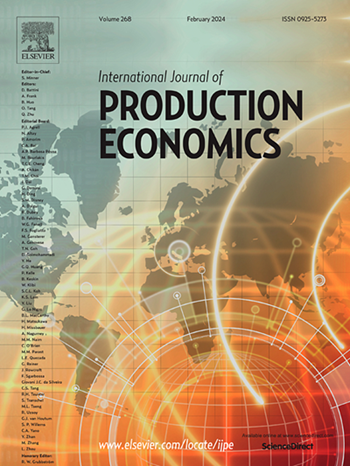Greenwashing in ESG information disclosure: An intertemporal signaling game approach
IF 10
1区 工程技术
Q1 ENGINEERING, INDUSTRIAL
引用次数: 0
Abstract
Strategic consumers are increasingly willing to pay a premium for durable products with ESG attributes, leading firms to potentially engage in greenwashing by exaggerating or embellishing their actual ESG investments to capture this premium. This paper develops an intertemporal signaling game model where a firm privately knows his level of ESG investment cost and can choose between two disclosure strategies: the active disclosure strategy (AS) and the reluctant disclosure strategy (RS). Our analysis explores the impact of greenwashing on dynamic pricing, sales volume, consumer surplus and social welfare. We show that, the firm with low level of ESG investment (low-type) cannot greenwash effectively when the cost difference between low and high ESG investment levels is large, since the firm with high level of ESG investment (high-type) is more willing to reveal his type; otherwise, the low-type firm has the opportunity to greenwash because the high-type firm prefers to hide his type. Moreover, choosing AS over RS increases the firm’s first-period sales but reduces his second-period sales due to the “information-inference” effect and the “price-shifting” effect. Interestingly, under certain conditions, greenwashing can actually increase consumer surplus, driven by consumers’ strategic behavior. Remarkably, the government’s “anti-greenwashing” requirements do not incentivize the firm to increase his ESG investment if the valuation discounts in the second-period is significant.
ESG信息披露中的“漂绿”:跨期信号博弈方法
战略消费者越来越愿意为具有ESG属性的耐用产品支付溢价,这导致企业可能通过夸大或美化其实际ESG投资来实现“漂绿”。本文建立了一个跨期信号博弈模型,在该模型中,企业私下知道自己的ESG投资成本水平,并可以在主动披露策略(AS)和不愿披露策略(RS)两种披露策略之间进行选择。我们的分析探讨了漂绿对动态定价、销量、消费者剩余和社会福利的影响。研究发现,当ESG投资水平与ESG投资水平之间的成本差异较大时,低ESG投资水平(低型)的企业不能有效地“漂绿”,因为高ESG投资水平(高型)的企业更愿意透露其类型;否则,低类型公司有机会洗绿,因为高类型公司喜欢隐藏自己的类型。此外,由于“信息推断”效应和“价格转移”效应,选择AS而不是RS增加了公司的第一期销售,但减少了公司的第二期销售。有趣的是,在一定条件下,在消费者战略行为的驱动下,洗绿实际上可以增加消费者剩余。值得注意的是,如果第二阶段的估值折扣很大,政府的“反漂绿”要求不会激励公司增加ESG投资。
本文章由计算机程序翻译,如有差异,请以英文原文为准。
求助全文
约1分钟内获得全文
求助全文
来源期刊
CiteScore
21.40
自引率
7.50%
发文量
266
审稿时长
52 days
期刊介绍:
The International Journal of Production Economics focuses on the interface between engineering and management. It covers all aspects of manufacturing and process industries, as well as production in general. The journal is interdisciplinary, considering activities throughout the product life cycle and material flow cycle. It aims to disseminate knowledge for improving industrial practice and strengthening the theoretical base for decision making. The journal serves as a forum for exchanging ideas and presenting new developments in theory and application, combining academic standards with practical value for industrial applications.

 求助内容:
求助内容: 应助结果提醒方式:
应助结果提醒方式:


